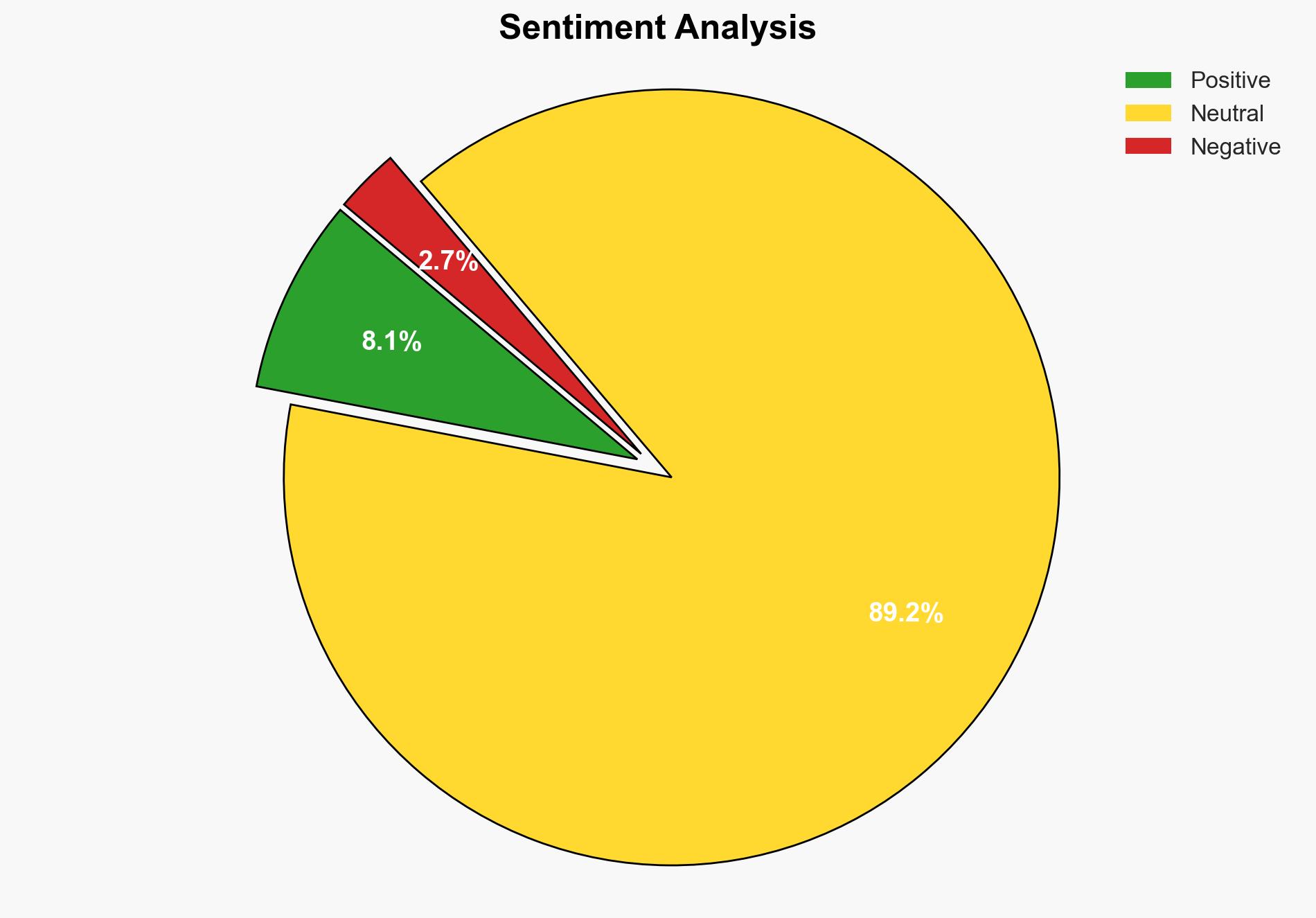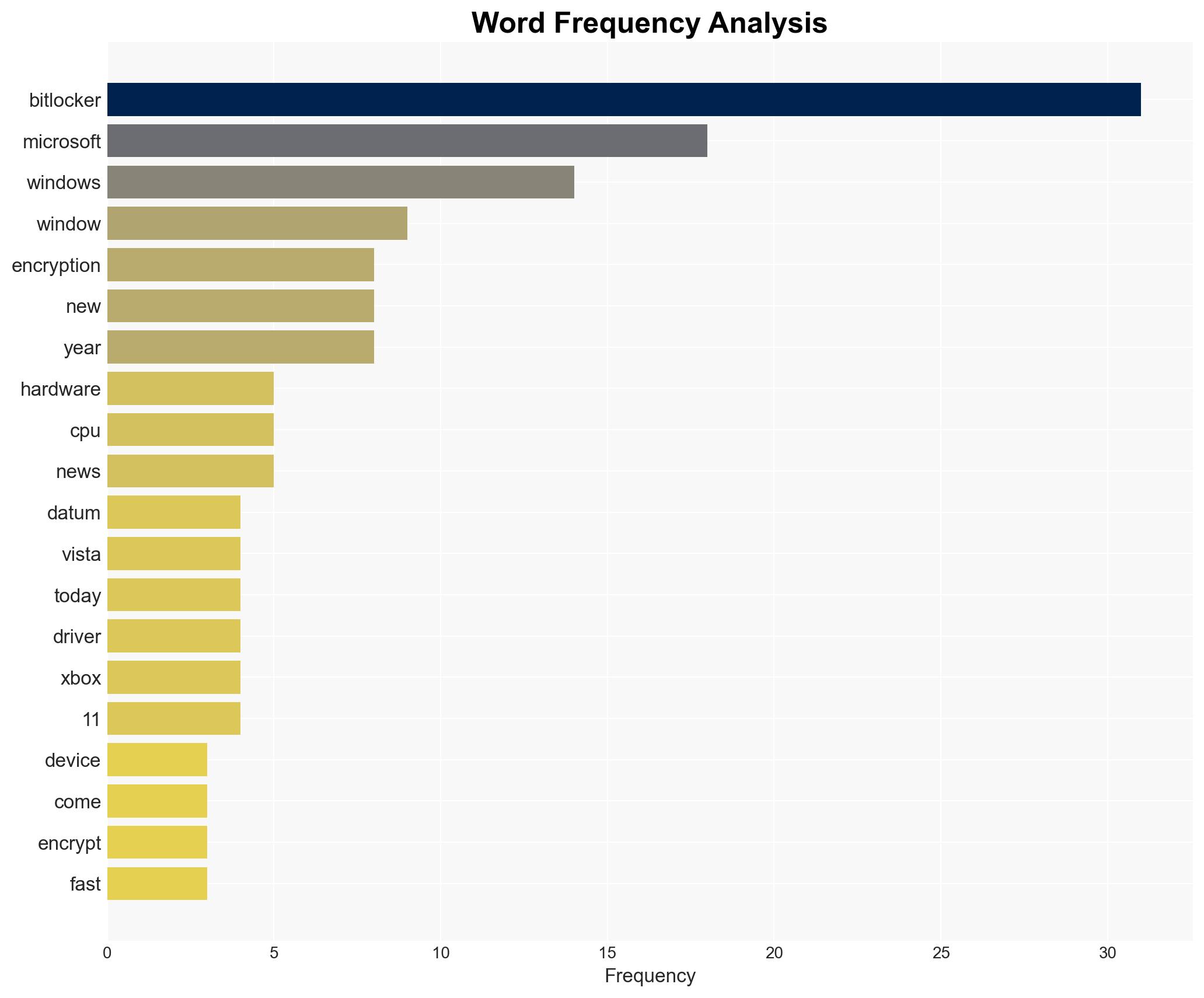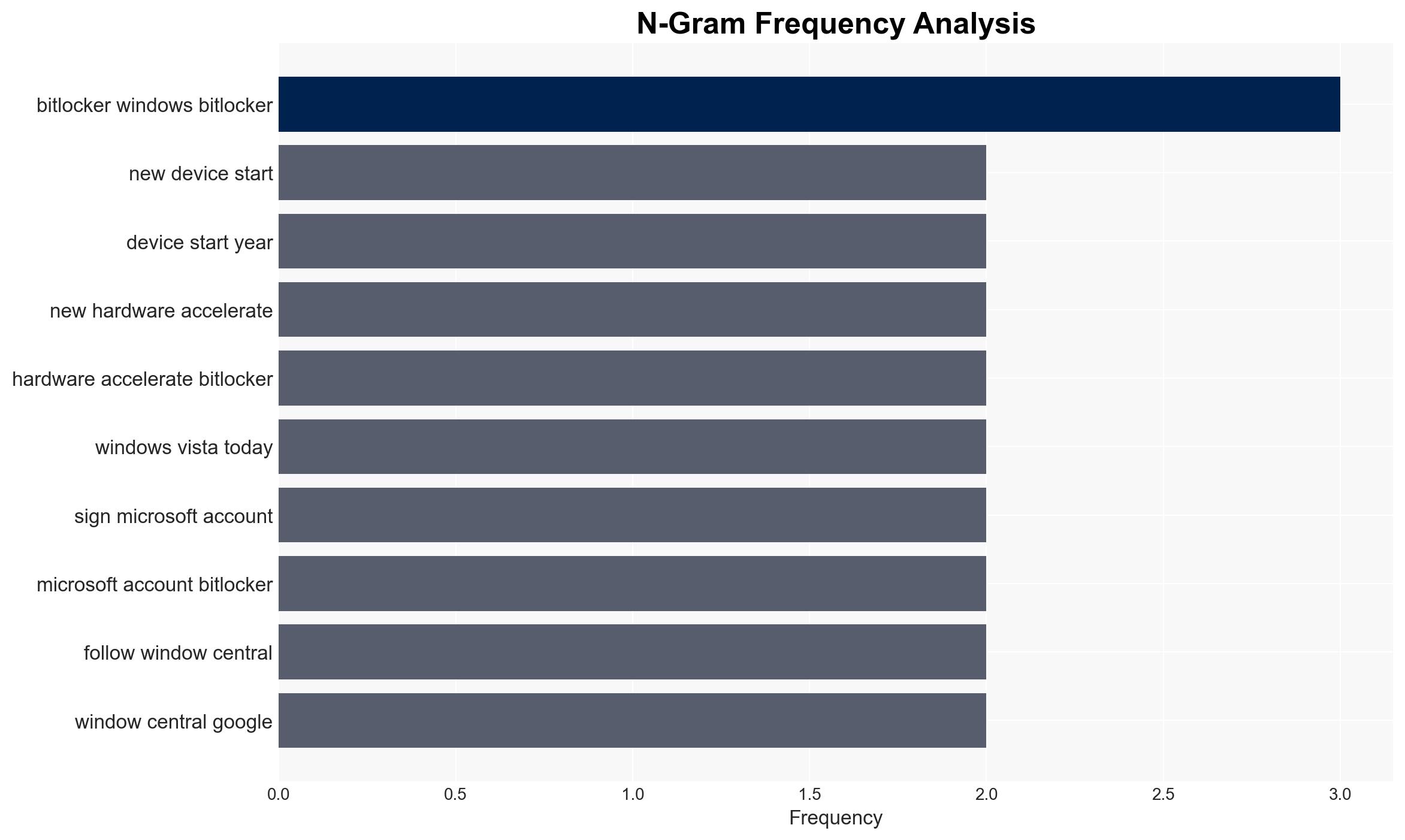Microsoft is making a major change to BitLocker encryption with new PCs in 2026 here’s what you need to know – Windows Central
Published on: 2025-11-18
AI-powered OSINT brief from verified open sources. Automated NLP signal extraction with human verification. See our Methodology and Why WorldWideWatchers.
Intelligence Report: Microsoft’s Strategic Shift in BitLocker Encryption
1. BLUF (Bottom Line Up Front)
Microsoft’s introduction of hardware-accelerated BitLocker encryption in new PCs starting in 2026 is a strategic move to enhance data security and performance. The most supported hypothesis is that this change aims to maintain competitive advantage and address emerging cybersecurity threats. Confidence Level: Moderate. Recommended action: Monitor industry adoption and potential security vulnerabilities.
2. Competing Hypotheses
Hypothesis 1: Microsoft is implementing hardware-accelerated BitLocker to enhance security and performance, responding to increasing cybersecurity threats and consumer demand for faster, more secure systems.
Hypothesis 2: The change is primarily a marketing strategy to differentiate new hardware offerings and drive sales of new devices, with security enhancements being a secondary benefit.
Hypothesis 1 is more likely due to the detailed technical enhancements described, such as cryptographic operations offloaded to dedicated hardware, which suggests a primary focus on security improvements.
3. Key Assumptions and Red Flags
Assumptions: It is assumed that the hardware-accelerated BitLocker will be universally adopted by OEMs and that it will not introduce new vulnerabilities. Another assumption is that consumers prioritize security and performance enhancements.
Red Flags: The potential for new vulnerabilities introduced by hardware changes and the reliance on Microsoft accounts for encryption key management could be exploited if not properly secured.
4. Implications and Strategic Risks
The introduction of hardware-accelerated BitLocker could set a new industry standard, pressuring competitors to adopt similar technologies. However, it may also lead to increased scrutiny from cybersecurity experts and potential regulatory challenges if vulnerabilities are discovered. Economically, this could drive sales of new hardware but may alienate users of older systems.
5. Recommendations and Outlook
- Monitor the rollout and adoption of hardware-accelerated BitLocker by OEMs and consumers.
- Conduct thorough security assessments to identify potential vulnerabilities in the new system.
- Best-case scenario: Microsoft sets a new standard for PC security, enhancing its reputation and market share.
- Worst-case scenario: Security vulnerabilities are discovered, leading to reputational damage and potential regulatory action.
- Most-likely scenario: Gradual adoption with some initial security concerns that are addressed over time.
6. Key Individuals and Entities
Microsoft Corporation, OEM partners, cybersecurity experts, regulatory bodies.
7. Thematic Tags
Cybersecurity, Data Encryption, Hardware Security, Microsoft, BitLocker, Technology Innovation
Structured Analytic Techniques Applied
- Adversarial Threat Simulation: Model and simulate actions of cyber adversaries to anticipate vulnerabilities and improve resilience.
- Indicators Development: Detect and monitor behavioral or technical anomalies across systems for early threat detection.
- Bayesian Scenario Modeling: Quantify uncertainty and predict cyberattack pathways using probabilistic inference.
Explore more:
Cybersecurity Briefs ·
Daily Summary ·
Support us





